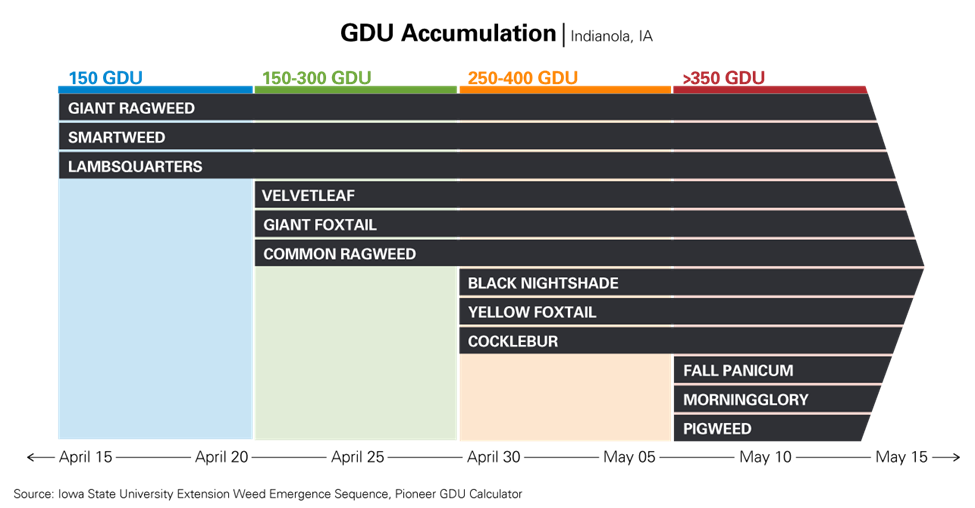Every day, farmers deal with variables out of their control, from weather to mechanical issues to weed pressure. In recent weeks, a new variable has affected many U.S. growers.
In early February, a U.S. District Court in Tucson, Arizona vacated the registrations for three dicamba herbicides – Xtendimax, Tavium and Engenia, meaning growers would not be able to use these herbicides for over-the-top applications.
Shortly after, the EPA issued an Existing Stocks order allowing growers and retailers to use the inventory of these herbicides already in the distribution channel, with final use dates varying by state.
“It’s challenging for growers trying to build their herbicide programs right now,” says Wade Firestone, marketing manager with HELM Crop Solutions. “Between the current regulatory environment and herbicide resistance trends we have experienced over the past few decades, it can be difficult to plan for what you need to manage weeds.”
Here are three strategies for managing weeds in an uncertain regulatory environment.
1. Know your target
When it comes to herbicide programs, the goals are simple:
- Eliminate existing weeds
- Prevent future weeds from emerging
In most cases, multiple herbicide programs can achieve these goals. By identifying your key target weeds, you can choose herbicides to specifically manage them.
“Get familiar with the specific weed species in your fields and the timing of their emergence,” says Firestone. “What weeds give you the most trouble year in, year out? Build a complete program with multiple modes of action that target these weeds specifically.”

2. Take an agronomic approach to the problem
The weed pressure you face in the field determines your response. Below are agronomic best practices for managing weeds in an uncertain herbicide market.
Conduct a burndown
Reducing early-season weed competition is crucial to preserving the yield potential of the crop.
“It is important to control the initial flush of weeds that emerges prior to your first application,” says Firestone. “In addition to a burndown product, a residual product will help to keep the next weed flush from emerging.”
More herbicide options exist for pre-plant and pre-emergent use than over-the-top use, including Reviton, glyphosate, glufosinate and many others. One key consideration for selecting burndown products is the plant back interval. Be sure to select products that will not impede the pace of planting and getting the crop in the ground.
Use residuals
While your burndown pass takes care of standing weeds, it is also important to keep new weeds from emerging. That's where residuals come in.
“Using both a burndown and a residual herbicide in the tank creates a complete herbicide program,” says Firestone. “You are not just killing the emerged weeds, but also killing the weed seed, which means less competition for the crop.”
Depending on the herbicide, you can either put the residual out with the burndown or follow up with another pass. When possible, apply residuals at the point that will provide protection the furthest into the season.
Multiple modes of action
In many cases, the need for over-the-top dicamba applications results from herbicide-resistant weeds. To contend with herbicide-resistant weeds for this season, as well as to prevent them in the future, it is imperative to develop a herbicide program that includes multiple modes of action.
Adjuvant package
Adjuvants help to make the most of herbicides. Whether it is through evenness of coverage, grip on the leaves, rainfastness, or other beneficial qualities, adjuvants can help to get optimal performance from your herbicide program.
3. Take a business approach to the problem
The needs in the field dictate the actions in the office. With supply and regulations making herbicide selection uncertain, it’s wise to create contingency plans so you can respond quickly to shifting market environments by changing herbicide programs.
Make multiple plans
Have three or four combinations of herbicides, active ingredients and brands that will work for your crop and weed pressure. Additionally, prepare alternative timings in case of odd weather (e.g. a wet spring causes a late burndown).
Prioritize which plans you prefer
Rank the herbicide programs by their level of appeal to you. That could be by price, efficacy, number of passes, etc. You will then have your Plan A, Plan B and Plan C.
Get it on the floor
“If your financial and storage situations allow, get the product on the floor,” says Firestone. “If you have your herbicides in-house, you can limit the effects that the supply chain can have on your season.”
Raising a crop is an increasingly complex business, requiring massive amounts of thought and consideration. Growers will continue to be challenged with changing industry dynamics. By knowing your target and preparing agronomic and business contingency plans, you can help hedge your bets against uncertainty in the marketplace.





